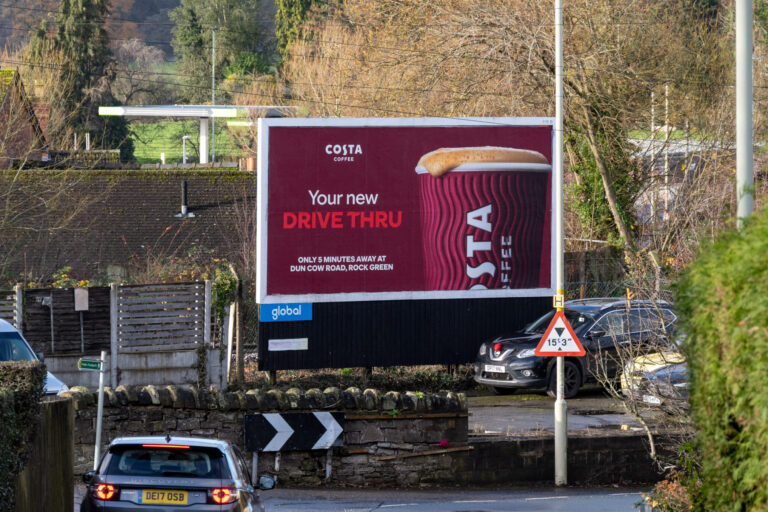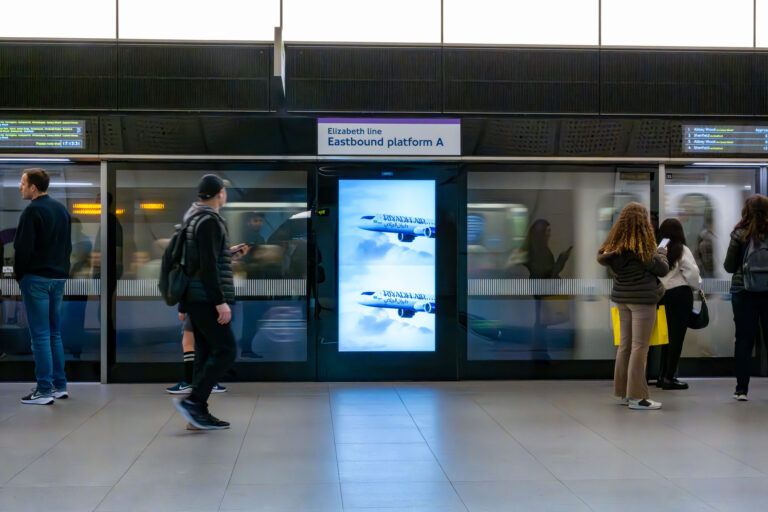Introduction: Why TfL Advertising Powers London’s Biggest Campaigns
TfL advertising — or Transport for London advertising — gives brands access to one of the world’s most visible and trusted media networks. Every day, over 31 million journeys are made across TfL’s Underground, bus, rail, taxi, and digital estate, creating countless opportunities for impactful out-of-home campaigns.
From iconic Tube stations to taxis and buses moving through every borough, TfL advertising connects your brand to Londoners where they live, work, and travel. In this guide, Excite OOH explains how to advertise across TfL’s media network in 2025 — covering formats, audience insights, booking steps, and smart planning tips to maximise return on investment.

What Is TfL Advertising?
TfL advertising refers to the commercial media opportunities managed across the Transport for London network including the Underground, bus network, rail services, and stations.
Formats range from classic billboards and posters to high-impact digital screens and full station takeovers. Collectively, these channels reach commuters, professionals, tourists, and residents at every stage of their daily journey.
Main TfL Advertising Environments:
-
London Underground – Posters, cross-track 48s, 16-sheets, escalator panels, and digital ribbons.
-
London Buses – T-sides, supersides, rear panels, wraps, and bus interiors.
-
DLR & Overground – High-frequency commuter routes with strong coverage of East and South London.
-
Elizabeth Line – Premium new environment with affluent business audiences.
-
Trams & Station Media – Localised formats ideal for hyper-targeted awareness.
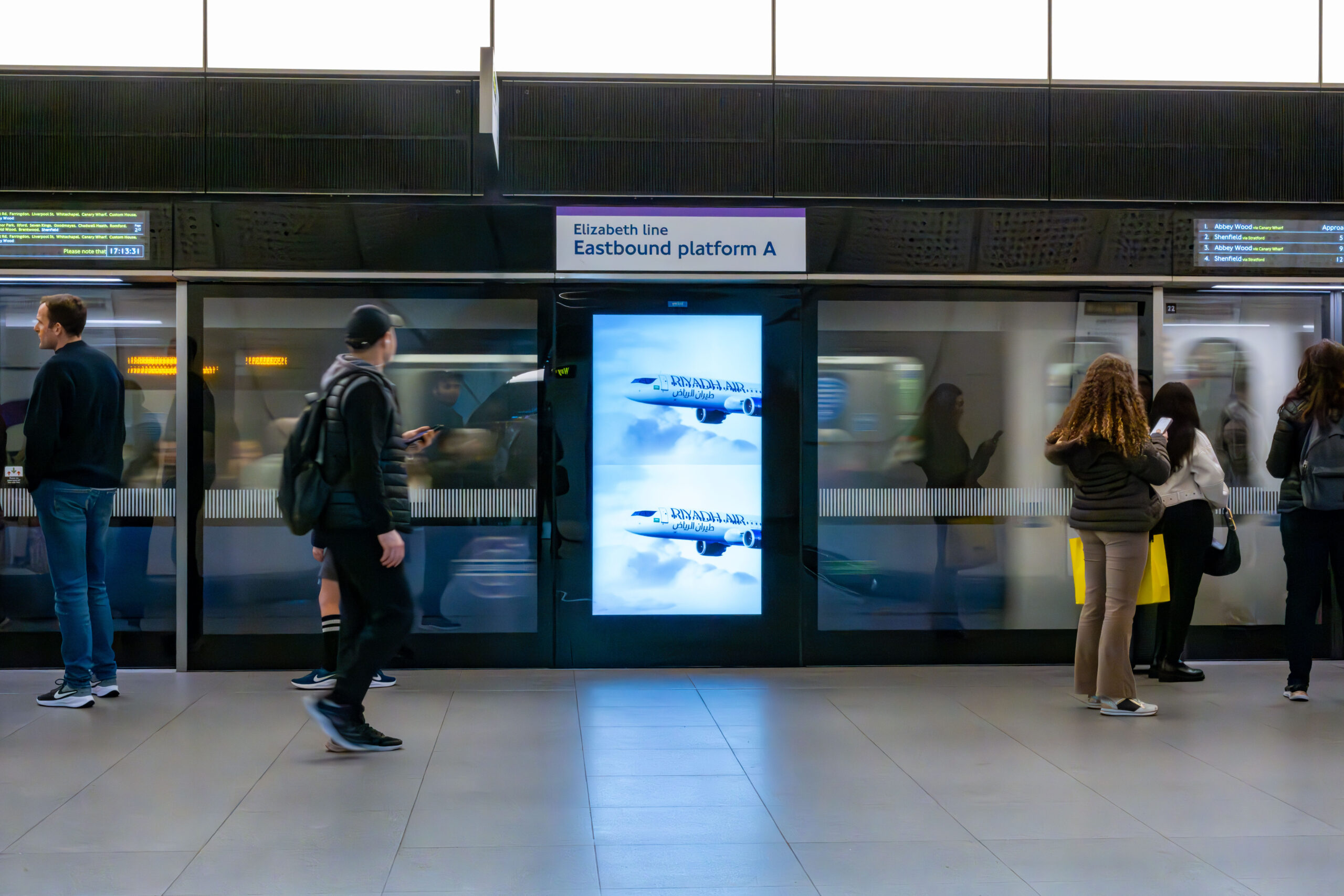
TfL Advertising Formats: Tube, Bus, Taxi & Station Media
London Underground Advertising
The Tube remains London’s most iconic advertising channel. Commuters spend several minutes on platforms and escalators, a huge opportunity for repeated brand exposure.
Key Formats:
-
4-Sheets & 16-Sheets: Common in corridors and near escalators.
-
Cross-Track 48-Sheets: Opposite platforms; ideal for long-view impact.
-
Digital Escalator Panels & Ribbons: Dynamic creative options that can rotate messaging.
-
Full Station Takeovers: Transform key hubs like Oxford Circus, Waterloo or King’s Cross with immersive brand experiences.
Best for: Broad brand awareness, national campaigns, and product launches.
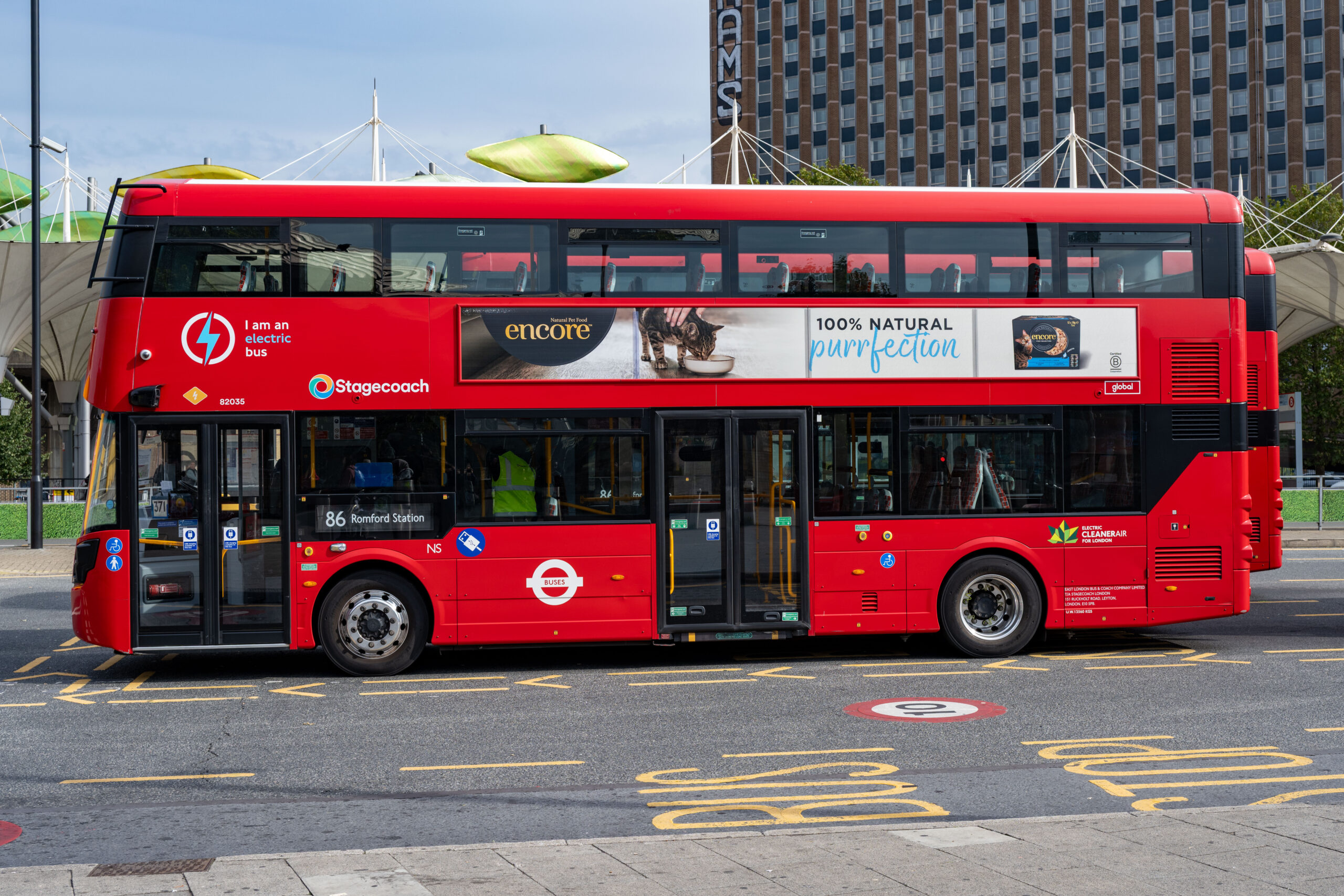
Bus Advertising
London’s 6,800+ buses cover 95% of the city — making them one of the most flexible and visible OOH formats in the world.
Key Formats:
-
T-Side: Large panels along double-decker sides — excellent for moving visibility.
-
Superside: Wide format for single-deck buses, great for local targeting.
-
Rear Panel: Cost-effective and ideal for traffic exposure.
-
Full Wraps: High-impact creative dominance across routes.
-
Interior Panels: Engage seated passengers and daily commuters.
Best for: Mobile brand visibility, retail promotions, and event launches.

Taxi Advertising (TfL-Licensed Black Cabs)
London’s black cabs are an iconic part of the TfL network — fully regulated by Transport for London and operating across the capital 24/7. Advertising on licensed taxis is one of the most visible and flexible ways to extend brand presence beyond fixed OOH formats.
Key Formats:
-
Full Taxi Wraps – Complete exterior coverage for maximum brand impact.
-
Supersides / Doorside Panels – Mid-cost format with strong street-level visibility.
-
Tip Seats & Interior Screens – Engage passengers directly with in-cab exposure.
-
Taxi Digital Roof Screens – Emerging DOOH format with GPS-based ad targeting.
Why Taxi Advertising Works:
-
Moves through every major zone, including high-traffic areas like Soho, Shoreditch, and Canary Wharf.
-
Premium perception — black cabs align brands with quality, heritage, and trust.
-
Perfect complement to bus and Underground advertising for full-city coverage.
Typical Costs:
Full taxi wraps start around £1,200–£1,800 per vehicle per month, depending on duration and fleet size.
💡 Tip: Combining taxis with bus or Tube advertising creates a multi-layered TfL presence, covering static, commuter, and mobile audiences across London.
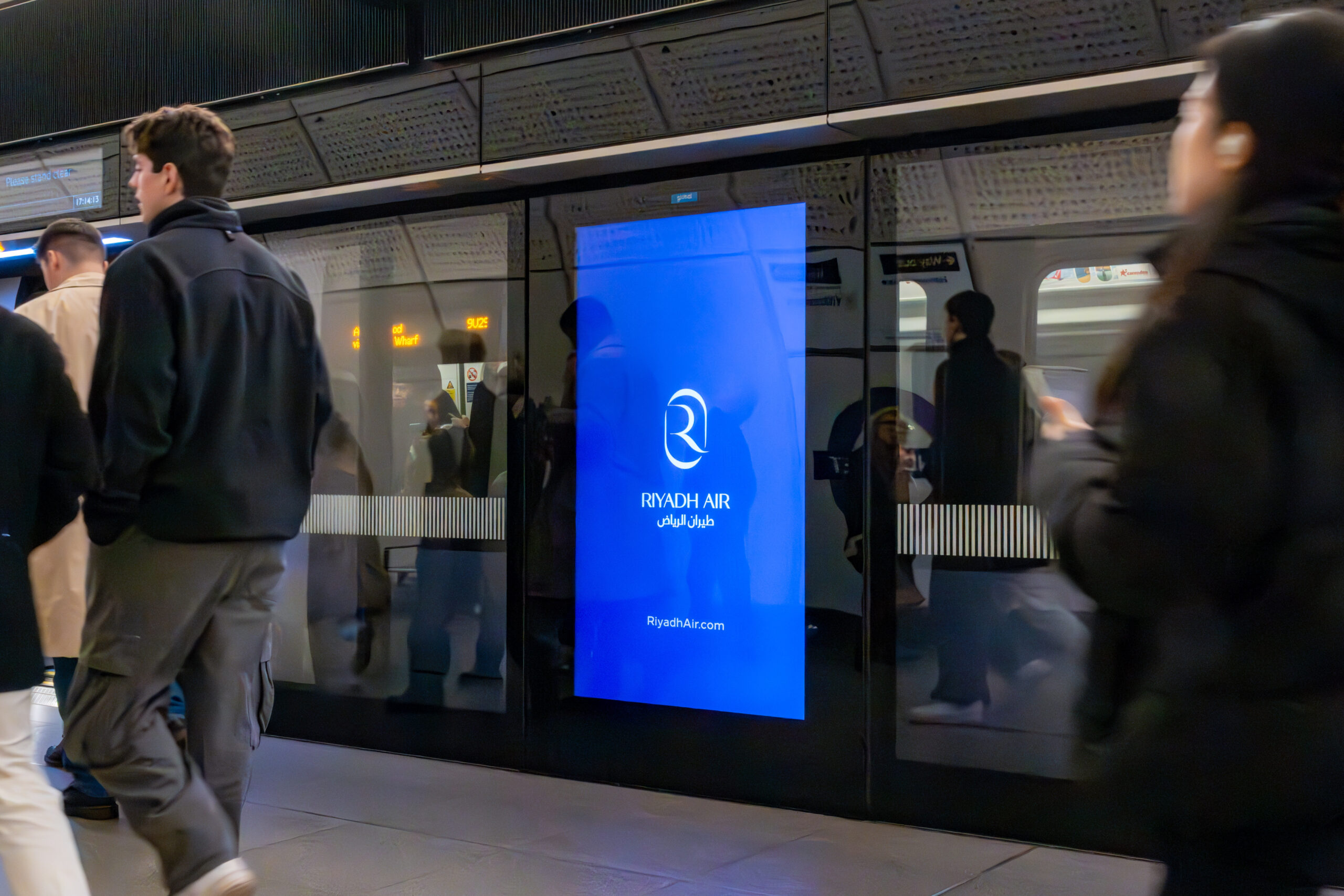
Why TfL Advertising Works For London Brands
1. Unmatched Reach
With London’s population exceeding 9 million and millions of daily visitors, the TfL network connects virtually every postcode.
2. High Dwell Time
Underground and station environments offer long dwell periods, making them perfect for brand storytelling and high-impact visuals.
3. Audience Diversity
TfL media captures all demographics, from students and families to professionals and international tourists — giving brands broad exposure.
4. Brand Safety & Trust
TfL spaces are regulated, clean, and brand-safe, aligning advertisers with trusted city infrastructure.
TfL Advertising Costs & Campaign Planning
TfL advertising is flexible enough to work for brands of all sizes — from small businesses targeting local audiences to national advertisers running large-scale takeovers.
Costs vary depending on the format, location, and duration of your campaign. For example, smaller bus or Tube posters can start from just a few hundred pounds per site, while large-format or premium placements — like digital escalator panels, taxi wraps or full station takeovers — can run into the tens of thousands for two weeks or more.
What matters most isn’t the headline rate, but how intelligently your budget is allocated. At Excite OOH, we plan campaigns to balance:
-
Reach vs. frequency (ensuring your message hits the right volume, not just the right people)
-
Mix of static and mobile formats (for both commuter and street-level visibility)
-
Digital optimisation (to adapt creative and timing for maximum impact)
🎯 Tip: You don’t need a huge budget to appear across TfL. Strategic placement on buses, taxis, or key Underground stations can achieve standout visibility and strong ROI with the right planning.

How to Book TfL Advertising
Advertising across the TfL network isn’t something you can simply “add to cart.” Space is limited, formats are in high demand, and approvals go through TfL’s licensed media partners. That’s where Excite OOH helps — managing the full process from brief to live campaign.
1. Define Your Objective
Start by being clear on what you want to achieve — whether it’s brand fame, product awareness, store footfall, or recruitment. Your goals shape everything from format choice to location planning.
2. Audience & Format Planning
Excite OOH uses TfL data, commuter flows and mapping tools to identify where and how to reach your audience. For example:
-
Reaching professionals → focus on the Underground and Elizabeth Line.
-
Reaching everyday Londoners → mix buses, taxis, and high-footfall stations.
-
Driving web traffic → layer in digital formats with QR-enabled creative.
3. Campaign Design & Creative Approval
All TfL creative is subject to design and compliance checks before going live. Excite OOH manages this process for you — ensuring artwork meets TfL’s standards while maintaining brand impact.
4. Booking & Scheduling
Once formats and creative are approved, we handle booking through TfL’s media channels — securing placements based on your preferred timing, routes, or stations. Digital screens can often be scheduled with flexible durations (e.g. peak-only or daypart campaigns).
5. Launch & Reporting
After your campaign goes live, Excite OOH provides post-campaign insights — including estimated impressions, audience exposure and digital engagement data — so you can measure ROI and plan the next phase confidently.
💡 Tip: The best campaigns are planned at least 4–6 weeks in advance, especially for premium Underground or station formats that book out early.
📩 Ready to advertise across London’s transport network? Get in touch with Excite OOH to start planning your TfL campaign today.
Frequently Asked Questions About TfL Advertising
TfL advertising refers to the range of media opportunities available across the Transport for London network, including the Underground, buses, taxis, DLR, Overground, and Elizabeth line. It allows brands to reach millions of commuters and visitors daily through high-visibility posters, digital screens, and vehicle formats.
Transport for London owns the media estate, but advertising is managed by licensed media partners and specialist agencies like Excite OOH, who plan, buy, and manage campaigns on behalf of brands.
Campaign costs vary depending on format, duration, and location. Smaller placements on buses or Tube corridors can start from just a few hundred pounds, while large-scale station takeovers or digital escalator panels are premium options. Excite OOH tailors plans to your objectives and budget — whether local or national.
Absolutely. TfL media isn’t just for big brands. Local retailers, restaurants, property developers, and events frequently use bus rears, taxi panels, or Tube 4-sheets to target neighbourhood audiences or key commuting routes. Excite OOH helps match smaller budgets with high-impact local placements.
The most in-demand formats include:
-
London Underground posters and digital panels (ideal for commuter awareness)
-
Bus supersides and rears (great for local and mobile coverage)
-
Taxi wraps (premium moving media reaching all zones)
-
Digital station screens (flexible and data-driven)
Not directly — TfL regulates these vehicles, but campaigns are booked through approved partners. Excite OOH coordinates all permissions, artwork, and scheduling with TfL’s official media suppliers.
Most static placements run in two- or four-week cycles, while digital screens can be booked for shorter or longer bursts — including flexible daypart scheduling. Taxi and bus campaigns often run monthly or quarterly for continuous visibility.
Yes — TfL media consistently delivers strong brand awareness, frequency, and trust. Research shows London commuters are highly receptive to advertising, especially when brands appear consistently across Tube, bus, and street environments.
Yes. Many TfL formats now support digital out-of-home (DOOH) and programmatic buying, allowing for real-time targeting by location, time, and audience profile. Excite OOH can integrate TfL DOOH into wider programmatic campaigns.

